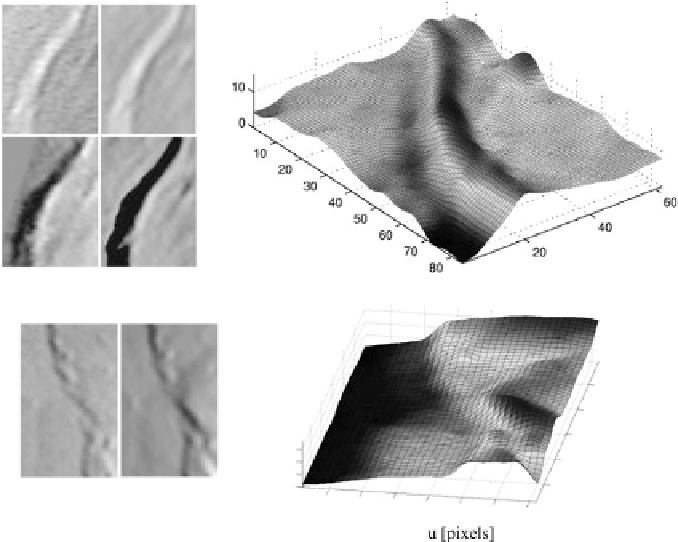Graphics Reference
In-Depth Information
Fig. 8.13
Telescopic CCD images, rendered counterparts, and three-dimensional reconstruction
result for (
a
) a mare ridge or fault southwest of the crater Aristarchus and (
b
) the end of a lunar
lava flow at the border between Mare Imbrium and Mare Serenitatis
topographic data. Salamuniccar et al. (
2011
) demonstrate that using a DEM con-
structed with the method described in Sect.
5.5
instead of the LOLA DEM yields
a significantly higher detection rate especially for small craters of about 1-2 km
diameter or less, thus allowing the determination of reliable statistics especially for
small crater sizes.
8.3 Three-Dimensional Reconstruction
of Lunar Wrinkle Ridges and Faults
The mare regions of the Moon display many low wrinkle ridges ('dorsa') and a
small number of tectonic faults ('rupes'). Wrinkle ridges were formed due to the
contraction of cooling mare lava. Tectonic faults are linear structures at which the
surface elevation changes suddenly. Their occurrence is due to the basin-forming
impacts on the Moon (Wilhelms,
1987
). This section describes three-dimensional
reconstruction results according to Wöhler and Hafezi (
2005
) and Wöhler et al.
(
2006a
) for some typical wrinkle ridges and tectonic faults. The presentation in this
section is adopted from those works.
The results shown in Figs.
8.13
,
8.14
and
8.15
were obtained by Wöhler and
Hafezi (
2005
). Figure
8.13
a shows a structure situated southwest of the crater





















Search WWH ::

Custom Search